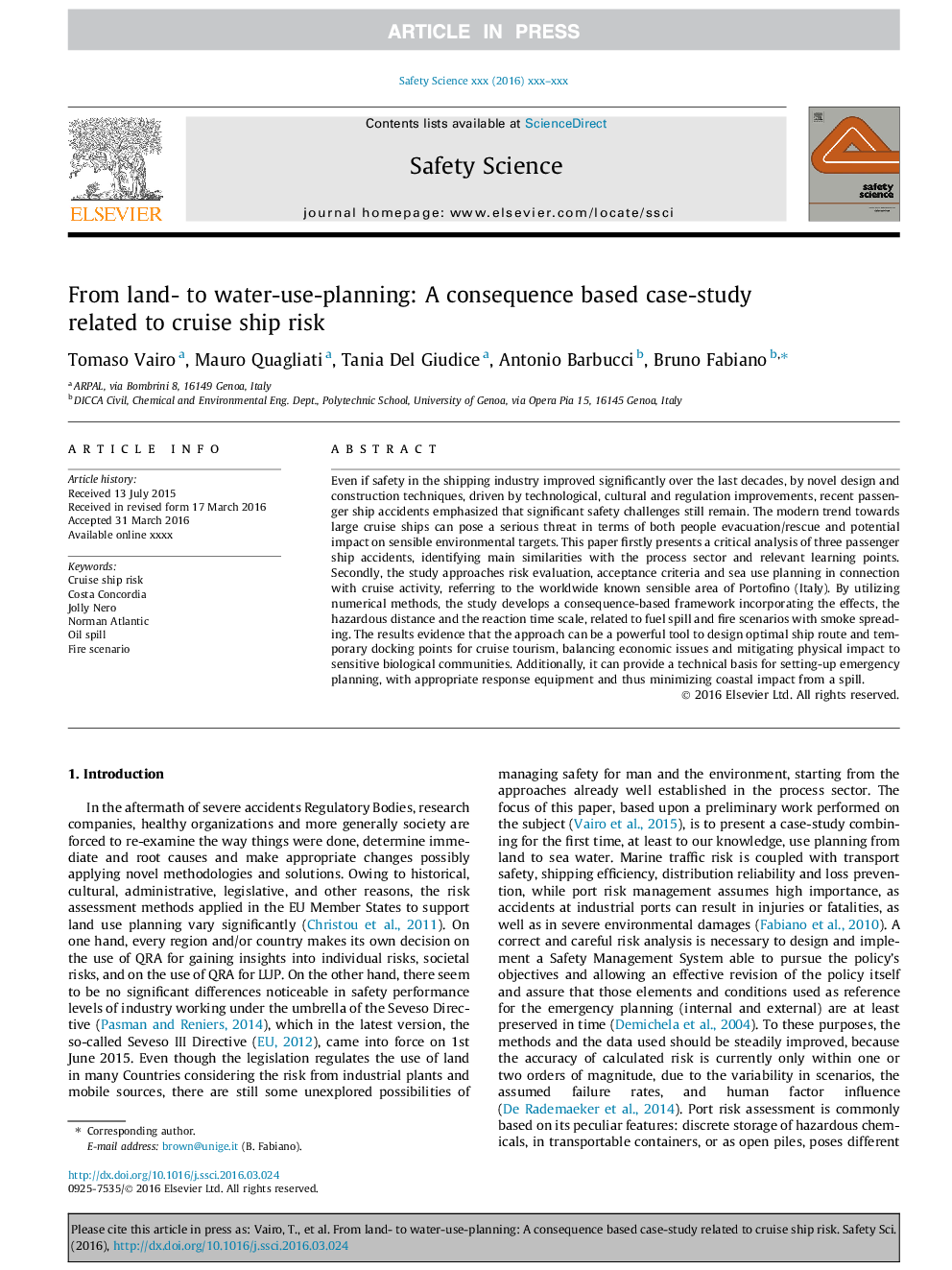| Article ID | Journal | Published Year | Pages | File Type |
|---|---|---|---|---|
| 4981142 | Safety Science | 2017 | 14 Pages |
Abstract
Even if safety in the shipping industry improved significantly over the last decades, by novel design and construction techniques, driven by technological, cultural and regulation improvements, recent passenger ship accidents emphasized that significant safety challenges still remain. The modern trend towards large cruise ships can pose a serious threat in terms of both people evacuation/rescue and potential impact on sensible environmental targets. This paper firstly presents a critical analysis of three passenger ship accidents, identifying main similarities with the process sector and relevant learning points. Secondly, the study approaches risk evaluation, acceptance criteria and sea use planning in connection with cruise activity, referring to the worldwide known sensible area of Portofino (Italy). By utilizing numerical methods, the study develops a consequence-based framework incorporating the effects, the hazardous distance and the reaction time scale, related to fuel spill and fire scenarios with smoke spreading. The results evidence that the approach can be a powerful tool to design optimal ship route and temporary docking points for cruise tourism, balancing economic issues and mitigating physical impact to sensitive biological communities. Additionally, it can provide a technical basis for setting-up emergency planning, with appropriate response equipment and thus minimizing coastal impact from a spill.
Related Topics
Physical Sciences and Engineering
Chemical Engineering
Chemical Health and Safety
Authors
Tomaso Vairo, Mauro Quagliati, Tania Del Giudice, Antonio Barbucci, Bruno Fabiano,
